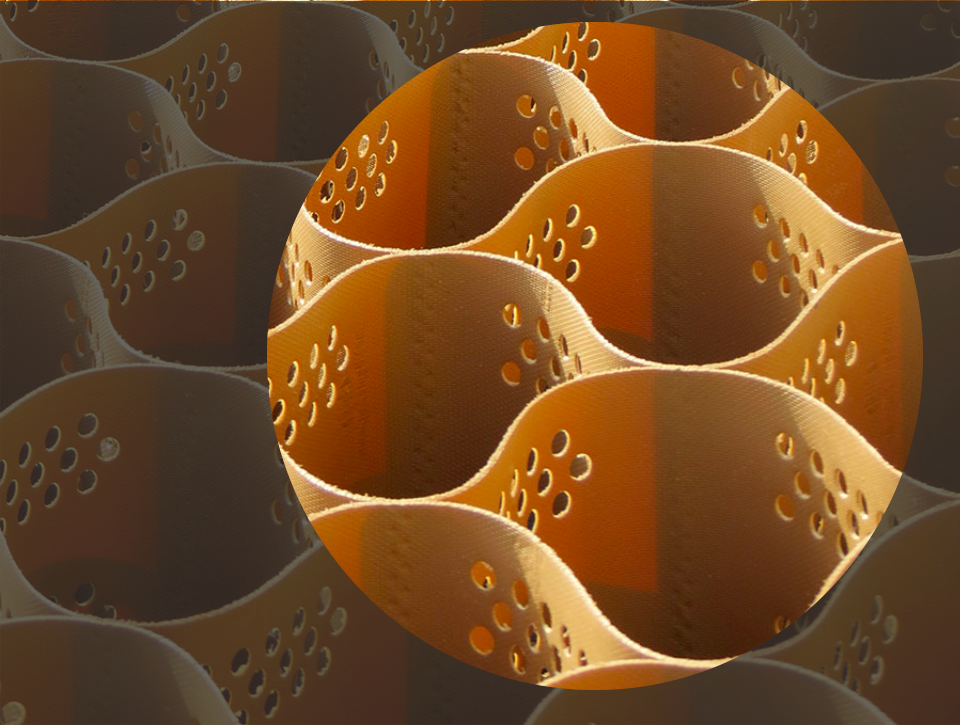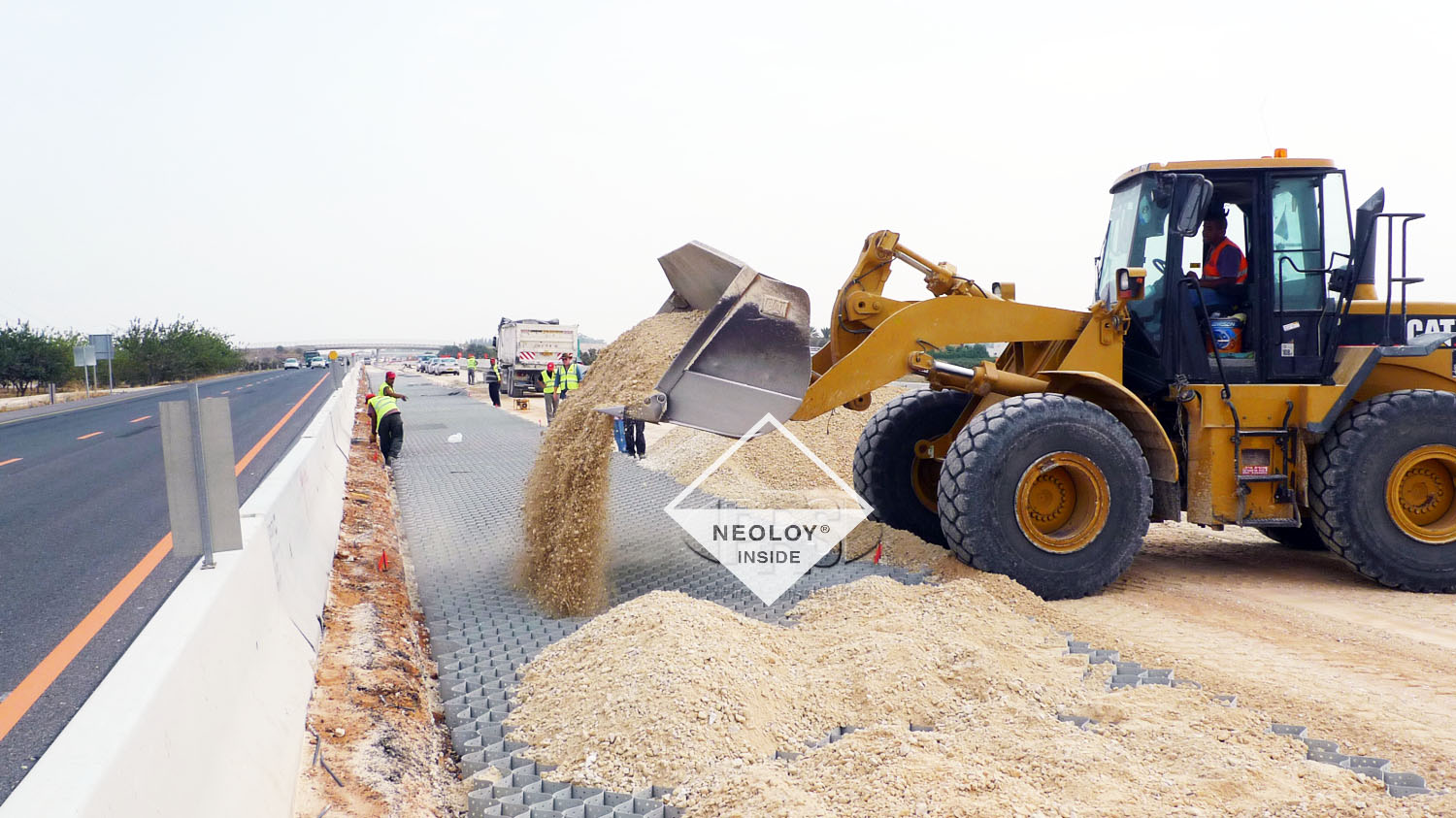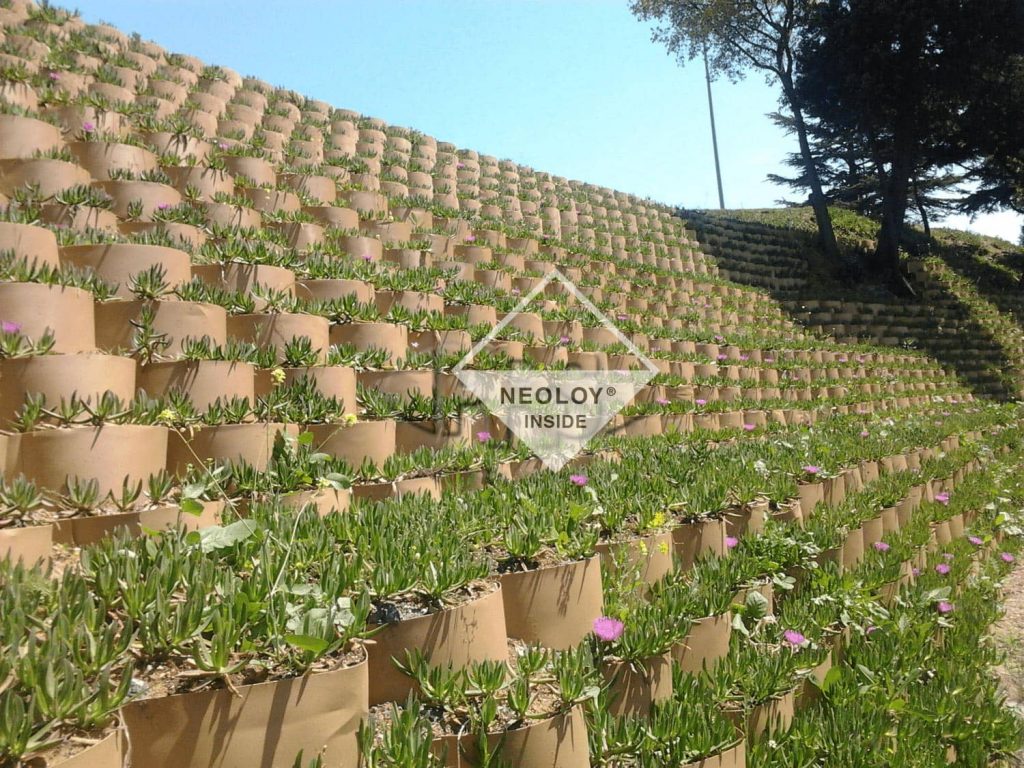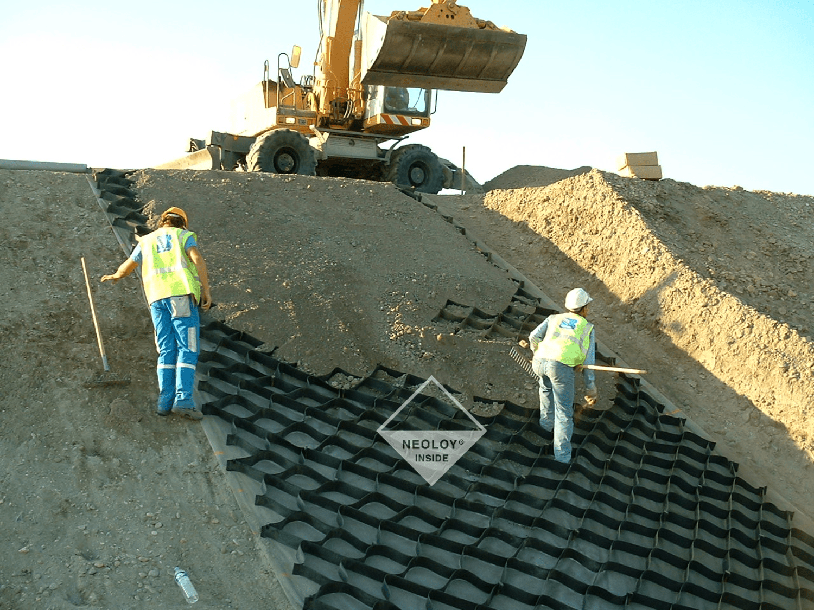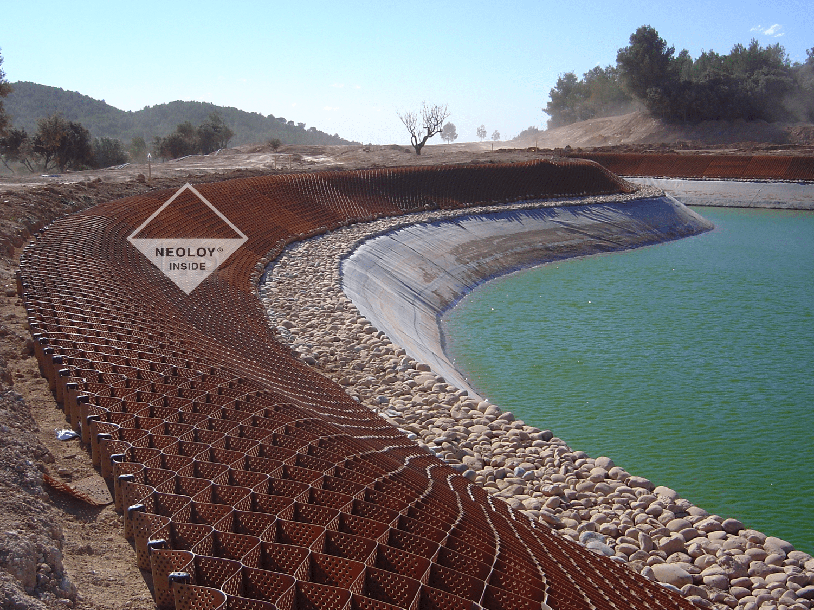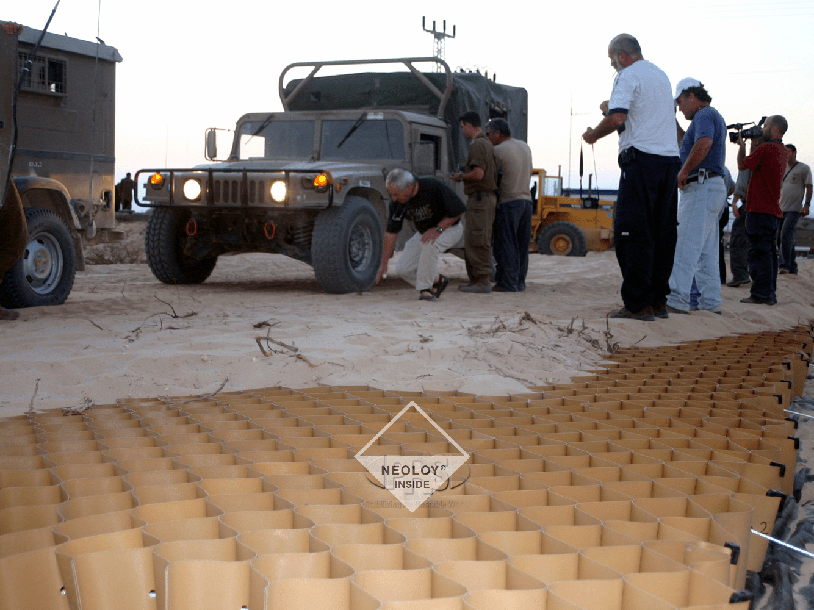Tough Cell is the strongest and most durable geocell, suitable for load support, steep slope stabilization and earth retention applications in wide variety of markets- public transportation, government, oil and gas, emergency infrastructures, military, mining, logging, railways, airports and many more.
Typical large-scale projects require combined applications and solutions for flexible pavements, roadway construction, access road construction, soil stabilization, slope/channel protection, embankments, gravel roads and retaining walls.
Tough Cell offers a comprehensive solution for most infrastructure projects while setting a new standard in the world of access road construction, soil reinforcement and ground improvement. When dealing with complex projects and multiple challenges, Tough Cell has cost effective solutions that significantly reduce road repair, maintenance, use of virgin aggregate materials and roadway construction time.






